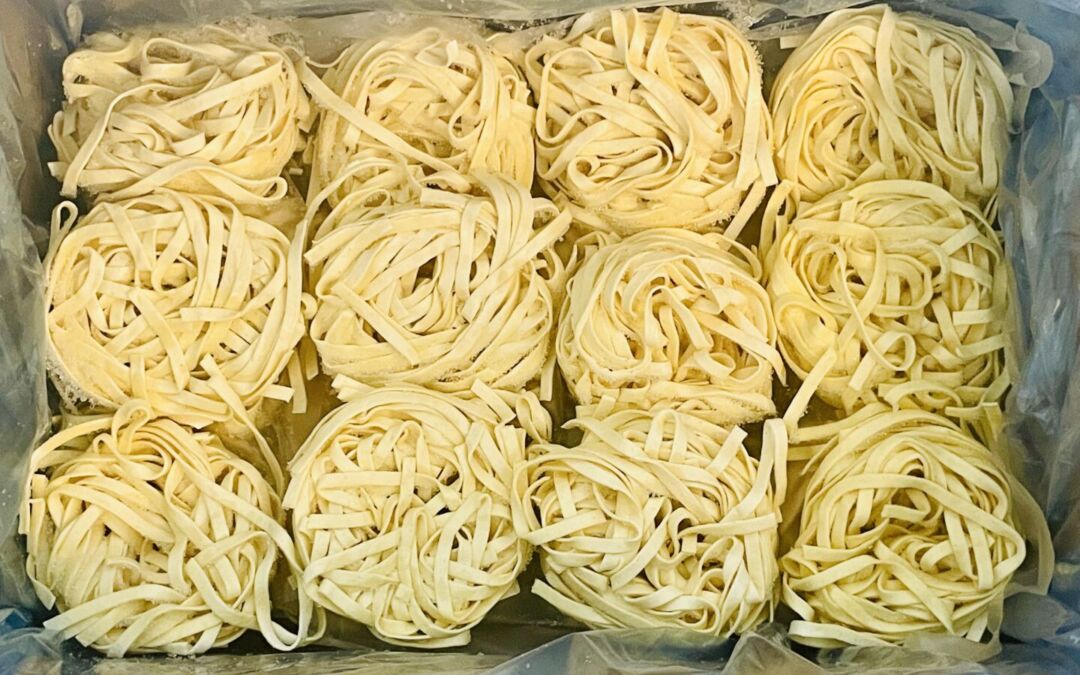Reducing waste and controlling food costs is essential for the success of restaurants. With high food waste rates impacting profitability, it is crucial to implement effective strategies. Join Olivieri® Foodservice as we explore various methods, from understanding food costs to optimizing menus and managing inventory. Each section provides practical insights into minimizing waste in ways that will help your restaurant continue to prosper.
Understanding Food Costs in Restaurants
Understanding food costs in restaurants is critical for maintaining profitability. Anticipating and managing these costs lays the groundwork for effective financial planning and operational success.
Maximising Yield with Frozen Pasta
Olivieri® Foodservice offers a range of frozen pasta that serves to maximize the yield. Using the IQF method, our frozen pastas are simply pasteurized. Once cooked, the yield can improve by up to 40%, which has a tremendous impact on food cost reduction.
Calculating Food Cost Percentage
The food cost percentage indicates the portion of total sales that is consumed by the cost of food. The formula involves dividing the cost of goods sold (COGS) by food sales and multiplying by 100, as seen below:
- Food Cost Percentage = (Cost of Goods Sold / Food Sales) x 100
Tracking this percentage regularly can help identify trends and areas for improvement. An optimal target usually falls between 25% and 35%, depending on the type of restaurant and menu. This metric directly informs how much revenue is retained after food expenses.
How Food Costs Affect Your Bottom Line
Food costs significantly impact a restaurant’s profitability. A higher food cost percentage can lead to reduced net profits, even if sales are strong. Key areas affected include:
- Pricing Strategy: Menu pricing must reflect food costs to ensure margins are sufficient.
- Operational Efficiency: Control over food costs may require streamlining operations and additional staff training.
- Supplier Relationships: Working closely with suppliers can help manage costs, ensuring that ingredients remain affordable.
It’s crucial for restaurant owners and managers to consistently monitor their food costs to make informed decisions on pricing and inventory management.r
Practical Solutions to Keep Food Costs Down
So, what can be done to alleviate the problem of food costs? Here are some simple solutions that will help you keep these figures down.
- Seasonal Menus: Incorporating seasonal ingredients into your menu means you save on transportation costs for supplies. Always adapt your menu to make sure you’re using seasonal vegetables in your dishes. Not only will it help your bottom line, it also has a positive impact on the environment.
- Scouting Suppliers: You may have your regular suppliers that you enjoy a positive relationship with, but it’s always good to investigate their competition to make sure their prices are competitive. Maintain contact with a wide network of suppliers and don’t be afraid to make a change if a competitor comes to you with a better offer.
- Efficient storage policy: It may seem like an obvious one, but having efficient storage practices in place in your restaurant ensures no food goes to waste.
The Impact of Food Waste on Profits
Food waste poses a significant threat to profit margins. In the restaurant business, it is estimated that up to 40% of food is wasted, leading to substantial financial losses. Factors contributing to waste include:
- Over-preparation: Making more food than necessary can easily lead to excess that is ultimately discarded.
- Improper Inventory Management: Poor tracking of inventory levels can result in expired products.
- Poor Portion Control: Serving sizes that are too large can lead to customer leftovers, which may not be saved.
By addressing these issues, restaurants not only reduce waste but can also improve their bottom line, creating a more sustainable and profitable business model. So, let’s look at some ways you can do this.
Effective Inventory Management
Effective inventory management is essential for minimizing waste and controlling food costs in restaurants. A well-organized inventory system allows for better tracking, purchasing, and use of food supplies, leading to improved profitability and efficiency.
Inventory Tracking Methods
Various methods can be employed to track inventory effectively. These methods help in understanding the flow of products and can be tailored to the specific needs of a restaurant. Common inventory tracking methods include:
- Manual Tracking: Simple yet effective for smaller operations. It involves maintaining physical records of inventory levels and conducting regular counts.
- Spreadsheet Software: Utilizing tools like Excel allows for more organized tracking and analysis of inventory data, enabling easier identification of trends.
- Inventory Management Software: Specialized software can automate many tasks, such as tracking stock levels and generating reports to streamline the process.
Using the First Out FIFO Method
The First In, First Out (FIFO) method is a crucial practice in inventory management. This approach ensures that the oldest stock is used first, reducing the chances of spoilage and waste. Implementing FIFO requires:
- Organizing stock so that older items are at the front and easily accessible.
- Regularly training staff to adhere to FIFO principles during food preparation and service.
Now that you’re armed with the management tools you need to keep food costs down, go out and make your restaurant all that it can be. The more efficiently your business runs, the more your clients will enjoy their dining experience. And isn’t that what the art of hospitality is all about!

